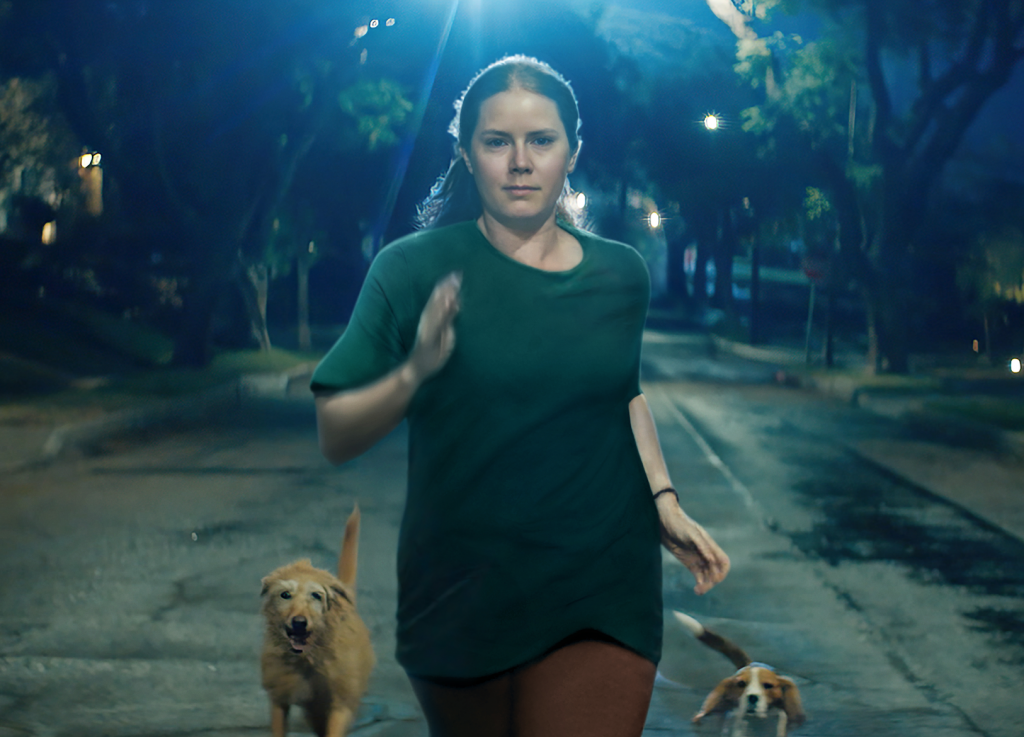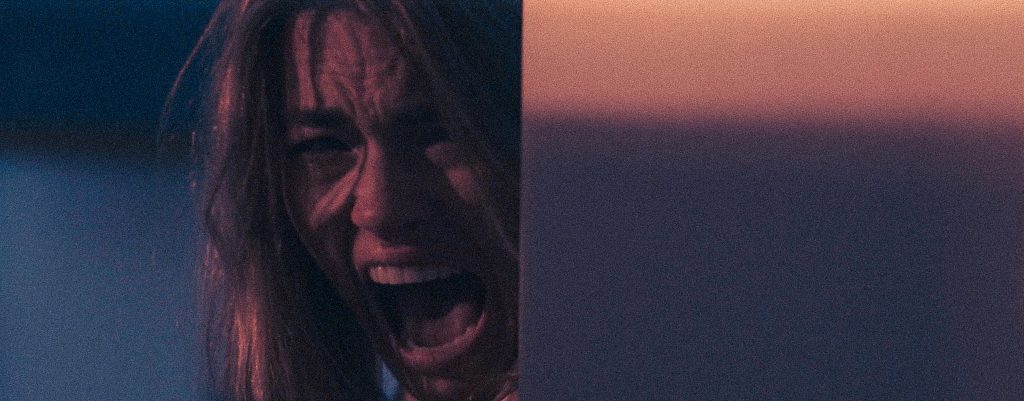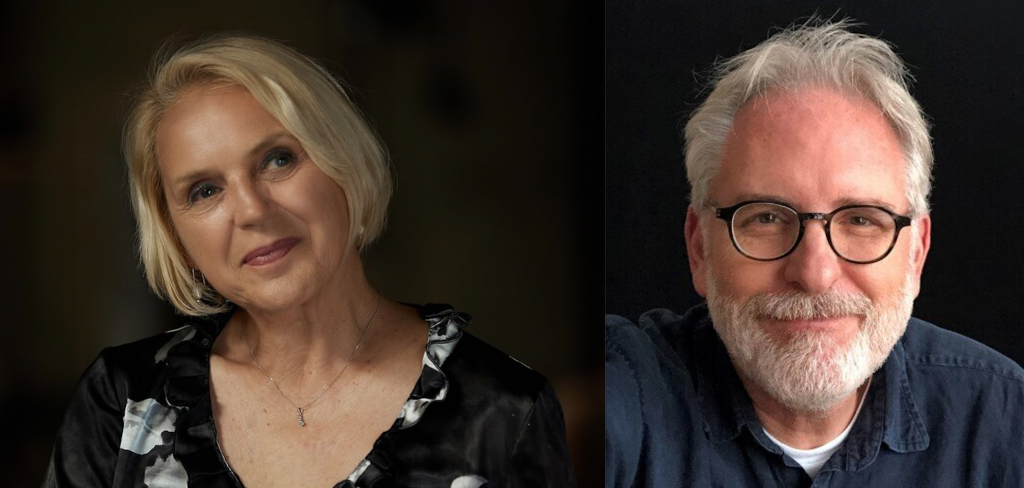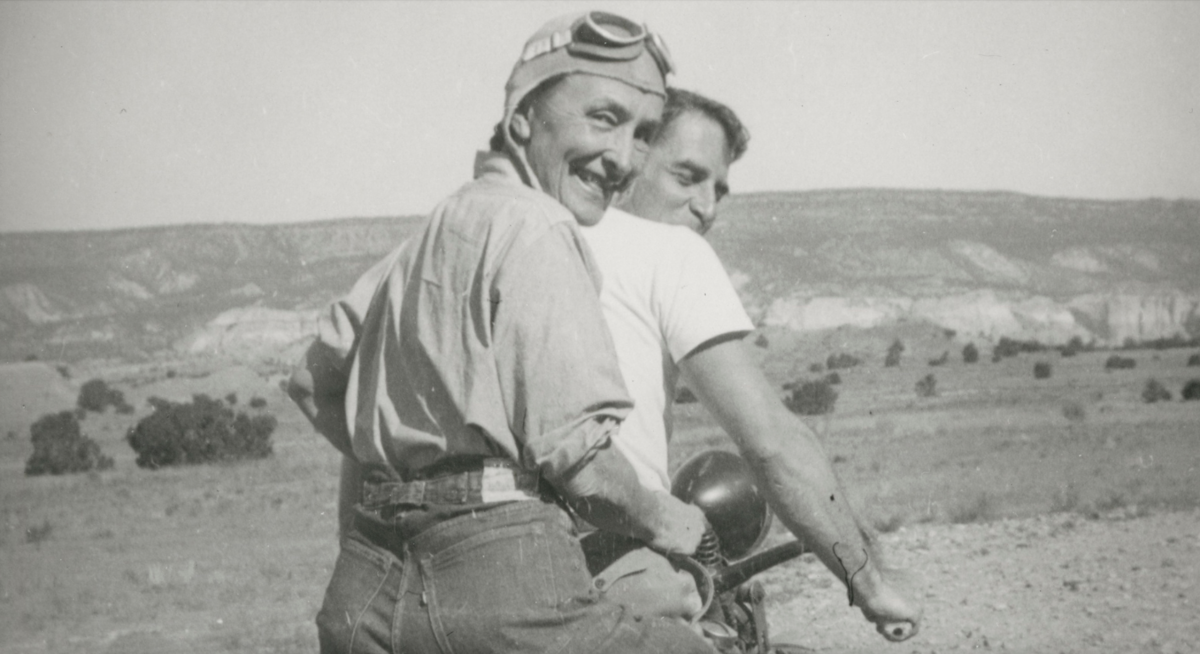By Lisa Provence, Kristie Smeltzer, and CM Turner Images courtesy VFF
Mapping the movement
Georgia O’Keeffe: the Brightness of Light
November 3 | Culbreth Theatre
With discussion
Academy and Emmy Award-winning independent filmmaker Paul Wagner has directed many amazing documentaries that shed light on subjects in American culture. His new film, Georgia O’Keeffe: the Brightness of Light, will screen at this year’s VAFF with a panel discussion, followed by a post-screening reception with the filmmakers at The Fralin Museum of Art at UVA.
Completed over two years during the COVID-19 pandemic shutdown, the film was shot in nearly every location in the United States where the “mother of American modernism” lived and worked. Through diligent efforts in researching and interviewing, Wagner and his team, including Ellen Casey Wagner, uncovered rare instances of the artist in archival film footage that bring O’Keeffe to life for a new generation of fine-art enthusiasts.
One of the most significant artists of the 20th century, O’Keeffe is known for her contributions to the Modernist movement, including her radical depictions of flowers and scenes set in the American Southwest. However, it’s O’Keeffe’s connections to Charlottesville that Wagner believes will leave the largest impact on local audiences.
In 2018, The Fralin mounted the exhibition “Unexpected O’Keeffe: The Virginia Watercolors and Later Paintings,” covering the five summers the artist spent in Charlottesville between 1912 and 1916. “Not only was this of interest as a largely unknown local story, it turned out that her time in Charlottesville attending and teaching at UVA marked a very important moment in her development as an artist,” Wagner says. “It was here at UVA that she discovered the theories of Arthur Wesley Dow that liberated her approach to art from the strictures of 19th-century European realism.”
Wagner was drawn to O’Keeffe as a subject because of the local connection, but also because of the enormous amount of information now available about the artist. Since director Perry Miller Adato released his 1977 documentary Georgia O’Keeffe, countless articles, exhibitions, and books have been produced covering her oeuvre and contributions to culture. “For these reasons,” Wagner says, “we now have a completely different, and deeper, understanding of who O’Keeffe was as an artist, as a woman, and as an American.”—CMT
Mother’s moon

Nightbitch
November 2 | The Paramount Theater
With discussion
Screenwriter and director Marielle Heller’s Nightbitch, adapted from Rachel Yoder’s 2021 debut novel of the same name, chronicles the days of Mother (Amy Adams), a professional artist who pauses her career to be a stay-at-home toddler mom in the ‘burbs while Husband (Scoot McNairy) travels frequently for work. Mother also happens to be turning into a dog.
Billed as a blend of comedy and horror, the film uses magical realism to take the transformations of a mother’s experience a step further than what most—if word on the street is to be believed—go through. However, the extended metaphor at Nightbitch’s heart seems apt. While not a mother myself, a year-long stint as a nanny to three boys under 6 had me eating scraps off others’ plates, sniffing butts, and occasionally barking at the moon. But here’s the thing: I could clock out—something Mother seems desperate to have the chance to do in Nightbitch’s trailer as she aggressively washes a cat’s bum in the tub, bemoaning, “Nobody in this family can clean their own butts!”
In Nightbitch, the audience sees a woman grappling with the messy aspects of parenting, which differ from the joys of motherhood—if greeting cards are to be believed. The film relies on voiceover (as novel adaptations are wont do) and alternate versions of moments (fantasy vs. reality) to show the tension between Mother’s interior and exterior selves. But her transformation doesn’t seem to be all bad, with moments of authenticity ensuing as Mother embraces her new, more feral, self. Early reviews laud six-time Academy Award-nominee Adams’ performance, praising her bone-deep commitment to the role. That feedback bodes well for the film, because the audience’s belief in Mother’s transformation hinges on Adams as the foundation they’ve built this tail, I mean tale, upon.—KS
Surviving the system

Juvenile: Five Stories
November 2 | Violet Crown 5
Three million young people are arrested every year, says Juvenile: Five Stories director Joann Self Selvidge. “Not all of them end up incarcerated, but all of them end up entangled in these systems that weigh them down, and keep them from realizing their potential.”
Selvidge didn’t start out to be an award-winning documentary filmmaker. The UC Berkeley comparative literature major just liked to tell stories.
Returning to her hometown of Memphis, Tennessee, she found plenty of stories to tell, starting with WLOK, the first Black-owned and -operated radio station in Memphis. “I had been doing oral histories,” she says, and she realized the WLOK story would “make an amazing documentary.”
Inspiration for Juvenile: Five Stories came from a public defender friend who was working on a jail diversion program for people with serious mental health issues. Selvidge was drawn to those stories. “I had personal experience with mental health institutionalization when I was in high school,” she says. And she wanted to explore how young people get access to care and “navigate these systems set up to criminalize them.”
Forming the relationships to make the film took years. “Things have changed dramatically in the world of documentary filmmaking,” she notes. There were always ethical practices, especially when dealing with minors. “Now there are equity practices to give [the young people] more agency in how their story was told.”
Through a Twitter callout to her connections with youth justice leaders across the country, Selvidge and her co-director Sarah Fleming found Romeo, Ariel, Michael, Shimaine, and Ja’Vaune. They came from different parts of the country and they all had different paths into the system: violence, sexual abuse, home instability, mental illness, substance abuse.
Finding Michael, the only white kid of the five, was the most difficult because “wealth and whiteness keep you out of the system,” says Selvidge.
The five were between 18 and 23 when they told her their stories. She hired young actors to tell their backstories in impressionistic, cinematic sequences. “We were dealing with histories of extreme trauma,” she explains. “We had to make decisions about how we’re going to portray that … We were very intentional for this film not to be, like, trauma porn.”
The five young people whose stories Selvidge documented seem to be doing amazingly well. “They’re all strong because they survived,” she says.
Two of them—Shimaine Holley, founder of Change Is Inevitable, and Romeo Gonzalez, a re-entry specialist and mentor—will appear with Selvidge at the November 2 Violet Crown screening.
“If there’s one thing I learned over and over and over again,” says Selvidge, “the best way for systems to reduce their harm and to change their policies and practices is when young people are given the power and resources to be in positions where they’re heard and can hold groups accountable. That’s when things start to change.”—LP
Thriller with a side of horror trivia

Catch a Killer
October 30 | Violet Crown 3
Writer and director Teddy Grennan doesn’t like blood. While living in Los Angeles, he wrote an animated feature called Holy Cow, about a bull who realizes his future is on the grill and with the help of a caterpillar, attempts to escape to India. The film, full of goodwill and karma, didn’t get made and the experience was frustrating, says Grennan.
His breakthrough realization: “Violence translates into every language.” And that the appetite for horror is insatiable.
After “boohooing into my drink, I wanted to move into bloody thrillers,” says Grennan. He shot Ravage in Virginia with Bruce Dern, and says the movie has done well financially.
“I knew going into this if I was doing a lo-fi film, it was not going to be about my first break-up or my mom or my dad,” he explains. “I was going to make it about blood and guts, and I knew I could get people’s money I’ve known for years and make enough to pay it back.”
In the opening montage, the addresses of crime scenes seem vaguely familiar: Elm Street. Amityville Circle. Christine Street. Not surprisingly, the movie’s wannabe detective and horror buff Otto soon begins to connect the dots on the trail of a serial murderer.
Catch a Killer, Grennan’s fourth film, is also a story of “star-crossed lovers,” he suggests. Winsome actors Sam Brooks and Tu Morrow play Otto and his pregnant girlfriend, Lex, as they set up house and try to figure out what’s next in the grisly tableau of murders.
Viewers will recognize a couple of notable Charlottesville locations, but the setting is an anonymous city. And as a bonus for horror fans, can you spot Joshua Leonard from The Blair Witch Project?
Twelve years ago Grennan and his wife moved to Somerset in Orange County, next door to the scene of the notorious alleged 2001 poisoning of Ham Somerville by his wife, known as Black Widow, at Mt. Athos.
He’s made four movies in Virginia, including Wicked Games, but his fifth film will be shot in Kentucky, because he had a tough time rounding up a film crew here. “This was a bear,” he says. “After COVID, the crews went away,” at least from central Virginia.
He describes his next effort, The Growing Season, as Witness meets The Blind Eye, with a good dose of Training Day.
Catch a Killer has already garnered accolades: the audience award for Spotlight Feature at the Nashville Film Festival, and Best Thriller Feature at the Atlanta Horror Film Festival.
“I knew it would be good business—if I didn’t botch it—doing thrillers,” he says. And one of these days, maybe he’ll get to make that lo-fi movie about his first girlfriend in Vermont.—LP
Visual concepts

Designing the Production featuring Kalina Ivanov and David Crank
November 2 | Irving Theater in the CODE Building
Production design is an integral aspect of filmmaking that largely defines the look and feel of the world on screen. Working closely with directors and cinematographers, production designers are responsible for developing the aesthetics of sets, locations, props, costumes, and more that allow viewers to immerse themselves in cinematic stories. This work is essential in communicating mood and driving narratives and character arcs established in a film’s script.
Tyler Coates, an editor at The Hollywood Reporter, moderates a panel featuring 2024 VAFF Craft Award-winner Kalina Ivanov (“The Penguin,” “Lovecraft Country,” The Boys in the Boat) and Richmond-based Academy Award-nominated production designer David Crank (Knives Out, The Master, Inherent Vice). The panel will discuss the development of visual concepts, scouting and choosing locations, the manufacturing of physical sets, historical research, and defining the aesthetic environments for film and television productions.
Crank has worked behind the scenes in the entertainment industry for more than 30 years, coming to film and television sets after designing scenery for theater productions from high school through his graduate studies at Carnegie Mellon University. As a former studio art student, Crank says the skills needed for drawing and painting are the same as those needed for production design, with the two disciplines constantly influencing each other within his practice, “either in intent or in skills.”
Designing for directors such as Paul Thomas Anderson, Paul Greengrass, Rian Johnson, and Terrence Malick, Crank is drawn to working with filmmakers who write their own material, and are thus primarily concerned with storytelling. “That is where the meat of the script is,” Crank says, “and as a designer, good storytelling is what gives you the most room for imagination and creating.”
Crank has also worked with two Academy Award-nominated production designers with Charlottesville connections: Jack Fisk (Killers of the Flower Moon, The Revenant, There Will be Blood) and Ruth De Jong (Oppenheimer, Nope, “Yellowstone”). “I think we three have a very similar way of hands-on working and certainly the same sense of humor,” says Crank. “We each have continued on successfully with our own styles without each other, but that is hugely due to Jack’s influence and guidance.”
Living in Virginia has afforded the production designer a unique experience that’s shaped his life as much as his career. “It’s given me a life full of friends who mostly aren’t in the same industry as me, which makes for very interesting dinner conversations,” Crank says. “I think it has also contributed to a certain outsider mentality, which for me is fine.”—CMT
